In a place where time appears to have stopped, where worries and troubles do not find their place in people’s souls and where tradition is not an outdated custom but a way of living, the most important witnesses of time are the few dozens of wooden churches that have spread around the hills of the Maramureș region.
Built around the 17th century, the churches gained national and international recognition for the intricate ways in which skilled craftsmanship and vernacular architecture came together in what was to become one of today’s most meaningful centers of the religious and cultural identity in Romania. There were over 300 wooden churches in the land of Maramureș. Today, only about 100 or so remain, most of them still active.
Wood craftsmanship was indigenous to this region, known for the beautiful Maramureș wooden doors. However, the erection of these churches in wood was not done as a means to incorporate the custom into religious life but rather as a response to the circumstances of those times. In the 17th century, the Habsburg Empire imposed a ban on heavy materials and their usage in building churches. As a reply, Romanians started building churches in wood, and as a result, an entire branch of renowned cultural and religious patrimony was brought to life.
The eight Maramureș’s wooden churches
UNESCO World Heritage List mentions eight of Maramureș’s wooden churches, each filled with historical achievements, unique architectural properties, and fascinating stories.
The Wooden Church of Șurdești
Built in 1721, this monastery was, until recently, the tallest wooden church in the country. Measuring 72 meters in height, it is short of 6 meters of the world’s highest wooden church, Sapanta-Peri monastery, located in the county of Maramureș as well. The church is surrounded by four turrets, indicating that the village had an Elders’ Council to rule over important matters.
The Wooden Church of Budești
Dating back to 1760, this monastery is the biggest among the 8 UNESCO churches, but inside the wooden walls, history and national pride prevails. It is said that the church halls hide the chainmail coat and the helmet of Pintea the Brave, Romania’s version of Robin Hood, who is famed for stealing from the wealthy to provide for the poor.
The Wooden Church of Dosești
This monastery was erected in 1770 and is best known for its detailed murals and paintings, which depict Doomsday not only for Romanians but for other nationalities as well. Built after the Tatar invasions of 1717, the murals acted as a political statement on the complicated history of the Orthodox church.
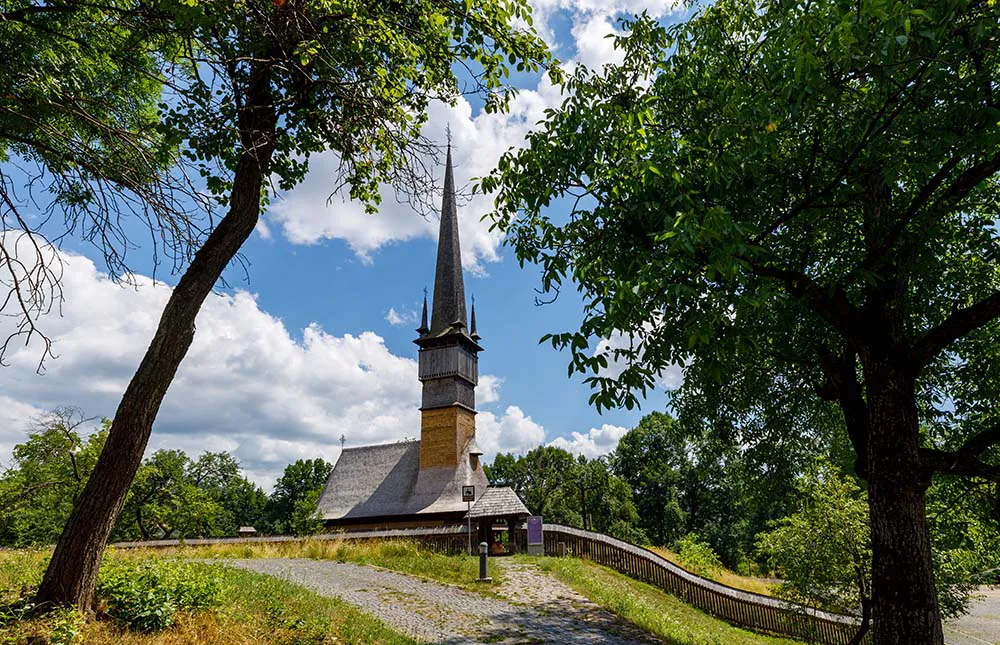

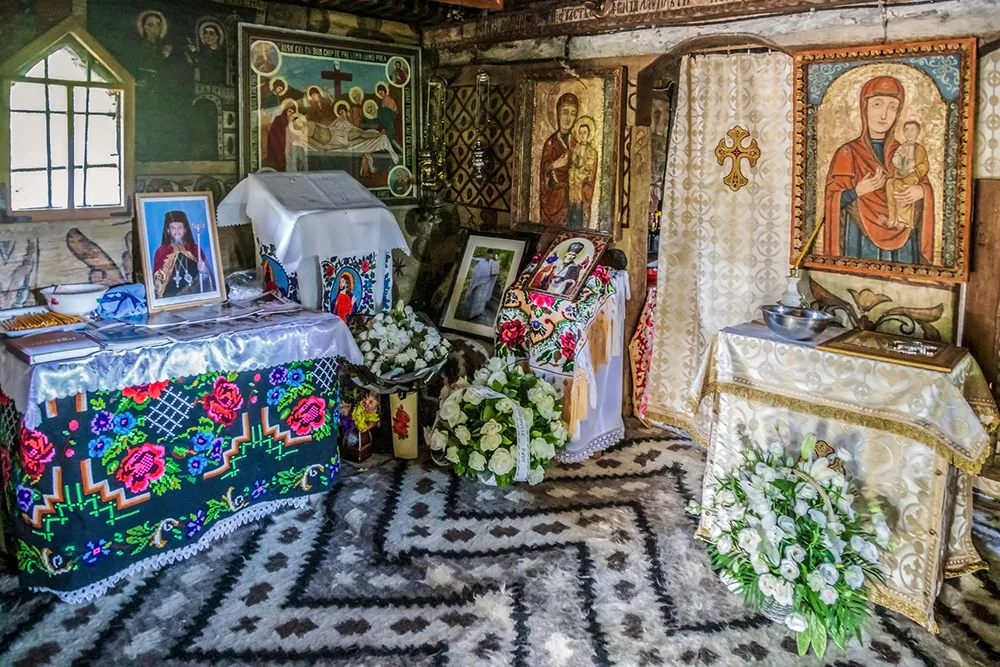
The Wooden Church of Bârsana
This edifice was erected as an offering of gratitude for the protection against the plague of 1710, the year before its construction. The epidemic led to the death of many, most of whom were not buried according to Christian traditions. In an attempt to ease their souls into the other world, the church was later moved right to the plague cemetery.
The Wooden Church in Plopiș
This church was built in 1798 in a city where only 49 families lived. According to the legend, each family contributed to the erection of the edifice and dedicated one gold coin to the treasury of the church. This would explain the discovery of exactly 49 golden coins at the base of the altar.
The Poienile Izei Wooden Church
The oldest church on the UNESCO list is located in Poienile Izei, and dates as far back as 1604. Despite harsh weather conditions and multiple attacks, the church remained almost the same for over 400 years. What sets it apart from the other churches, besides its age, is the representation of dramatic and gruesome paintings on its walls. People hanging from their tongues, sleeping on the fire bed, and other depictions of a sinner’s fate are showcased on the walls.


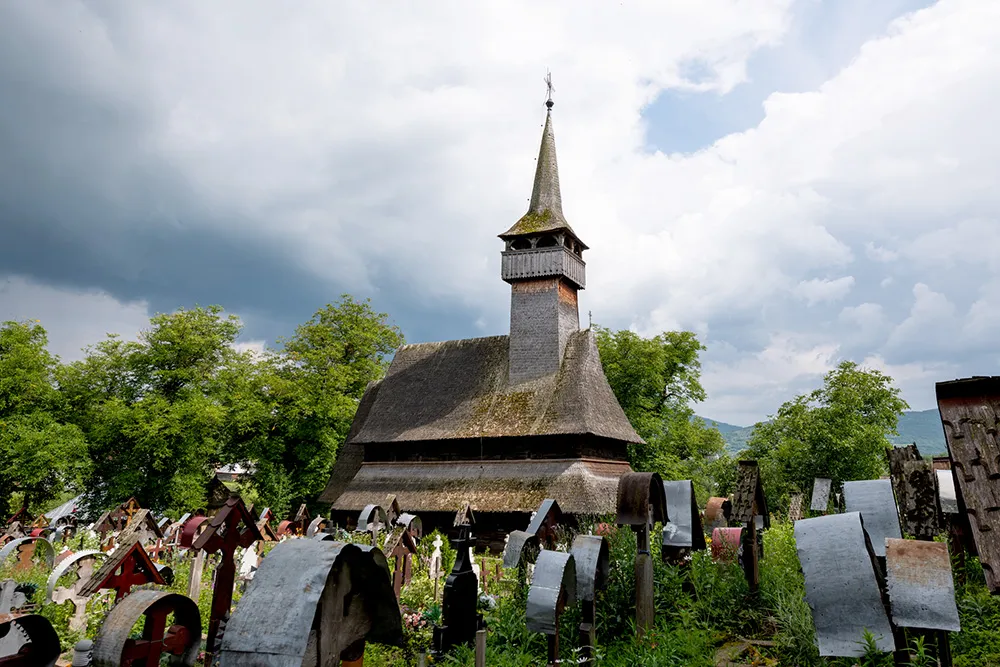
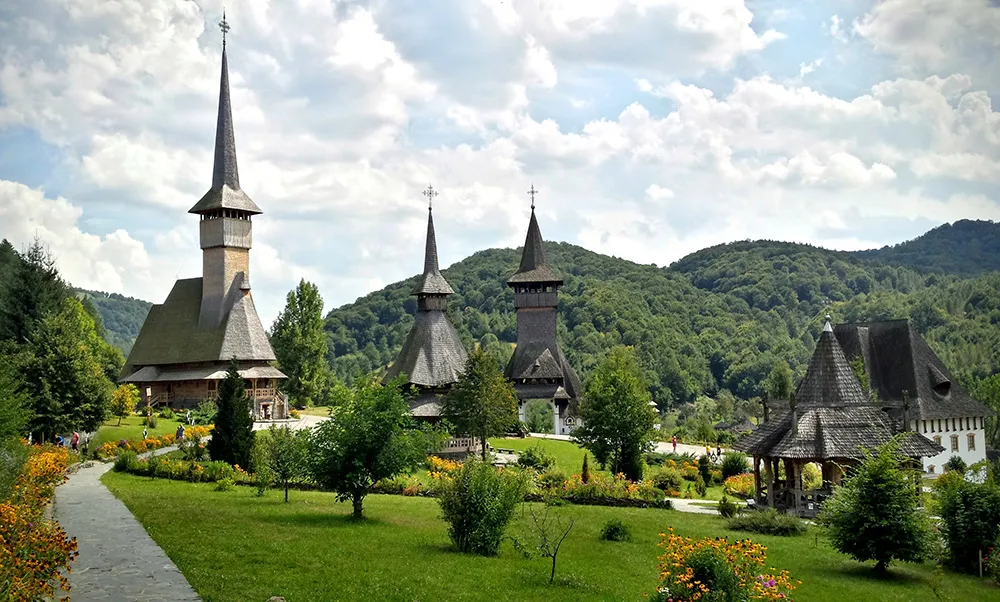
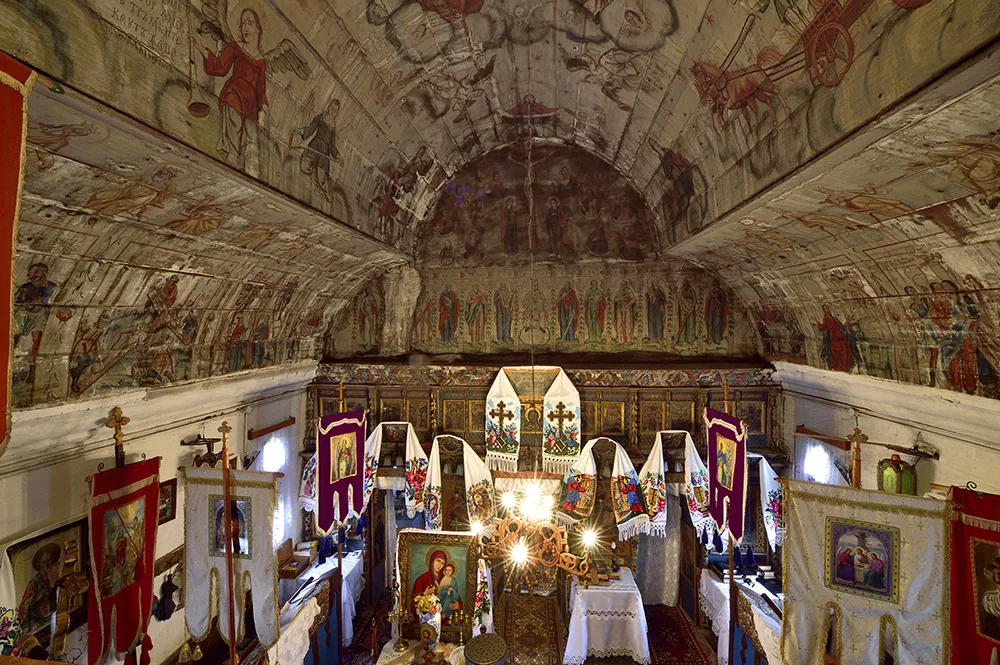
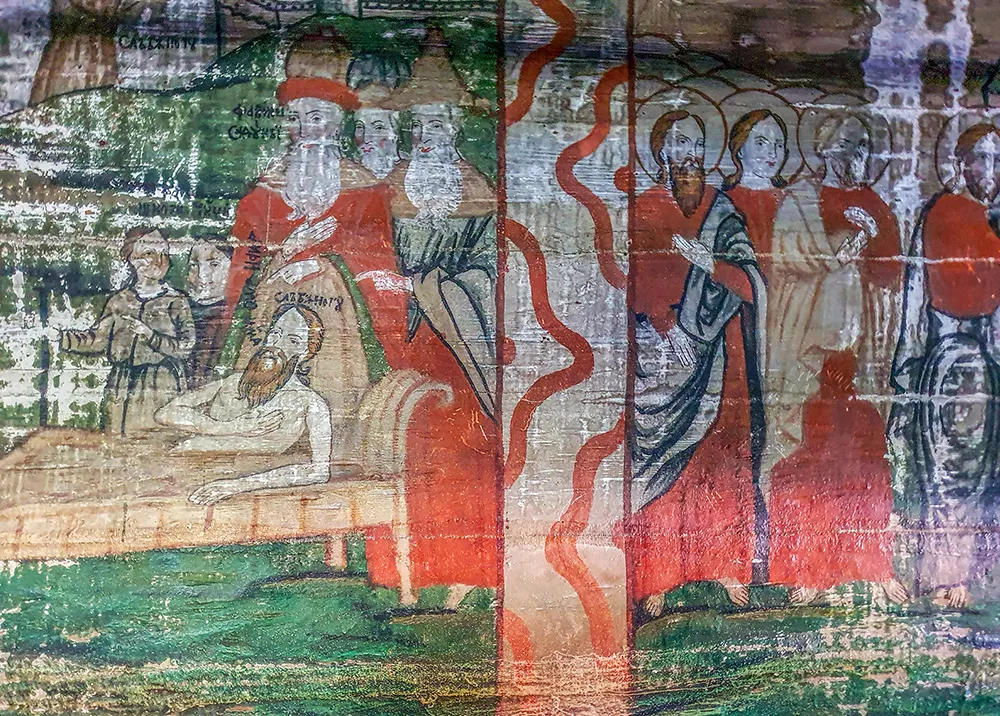
The Rogoz Wooden Church
This church showcases the tragic history and fate of most of the Maramureș churches during 1700, with a mural mentioning “the terrifying year 1717 of the time of the Tatars”, when numerous churches were destroyed and burnt down, never to be seen again.
The Ieud Hill Wooden Church
This church hosts Romania’s oldest manuscript. The “Codex of Ieud” was found in 1921 in the church’s attic and is believed to be the oldest text preserved in Romanian, dating from 1391.







